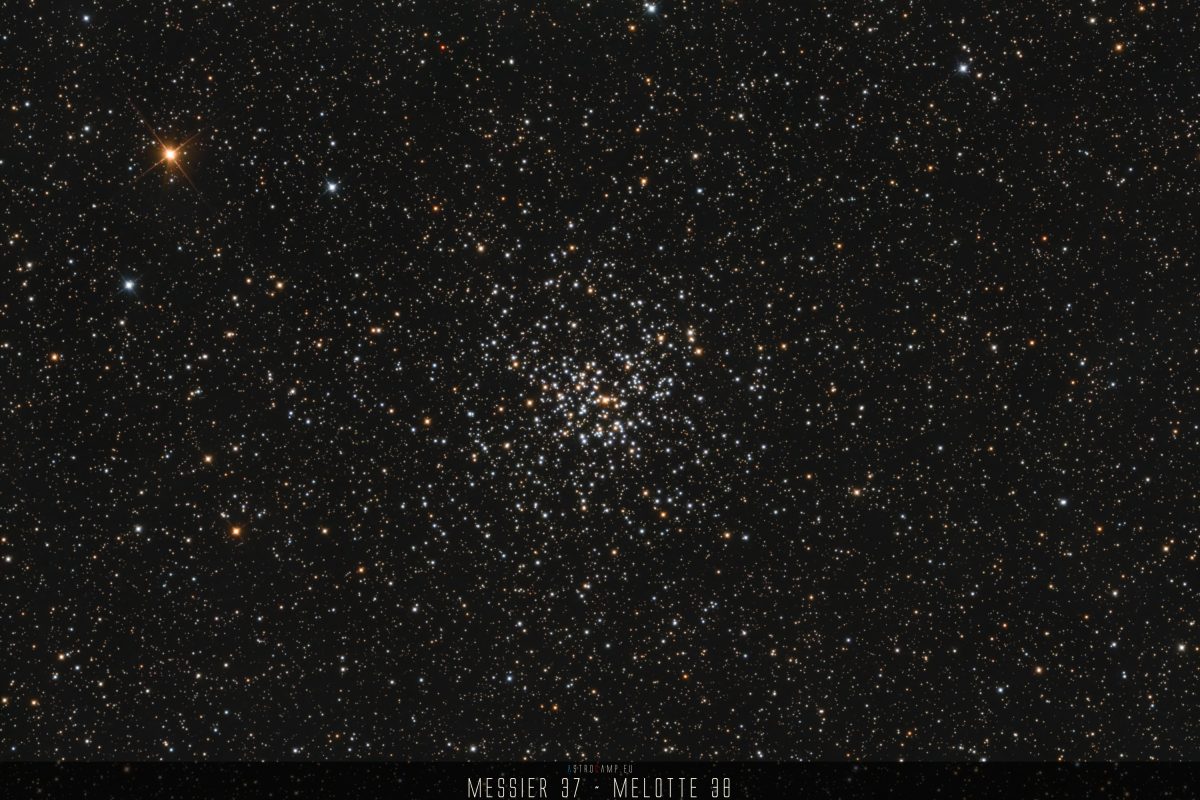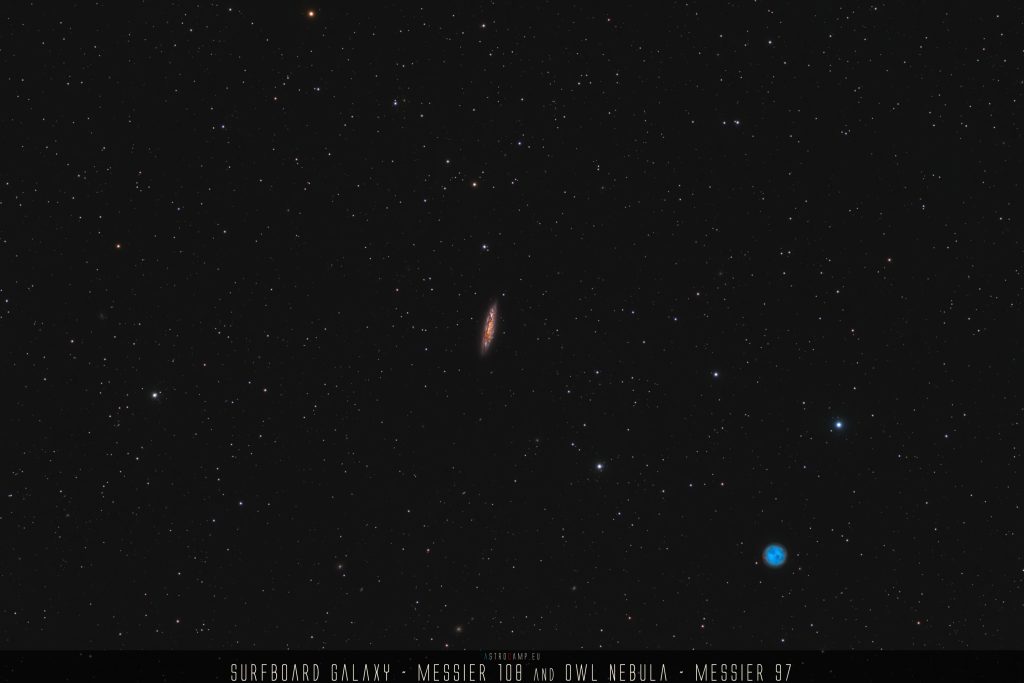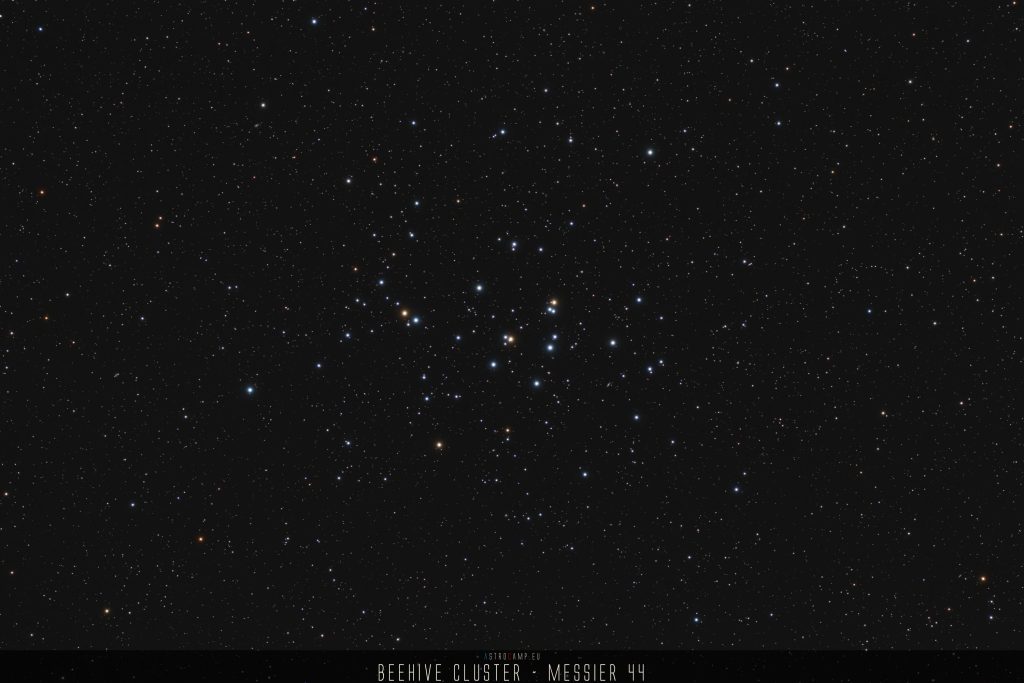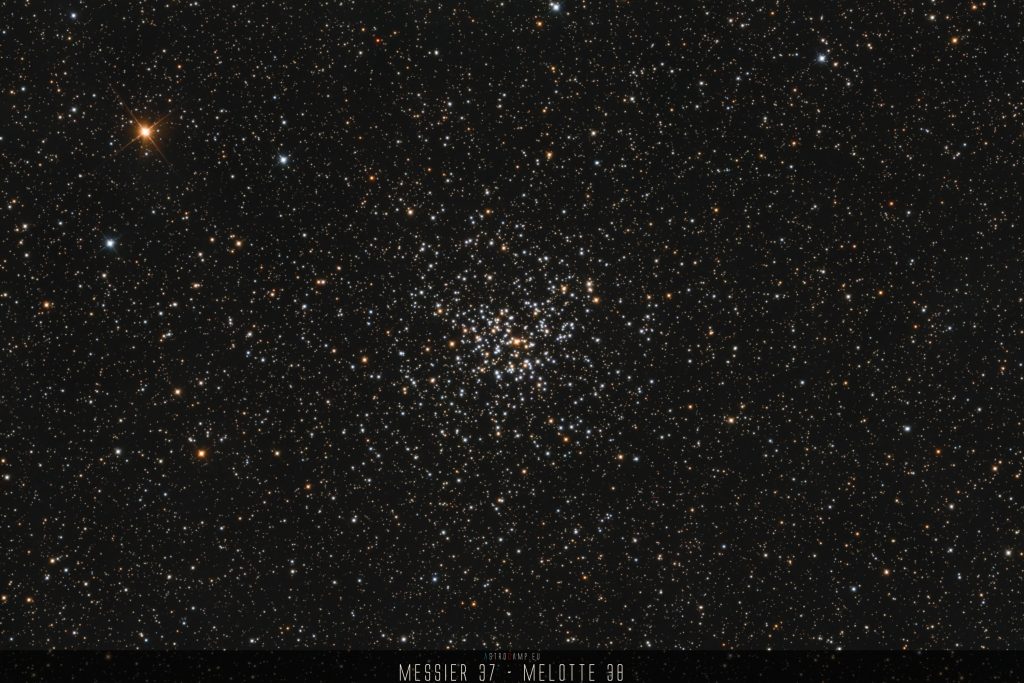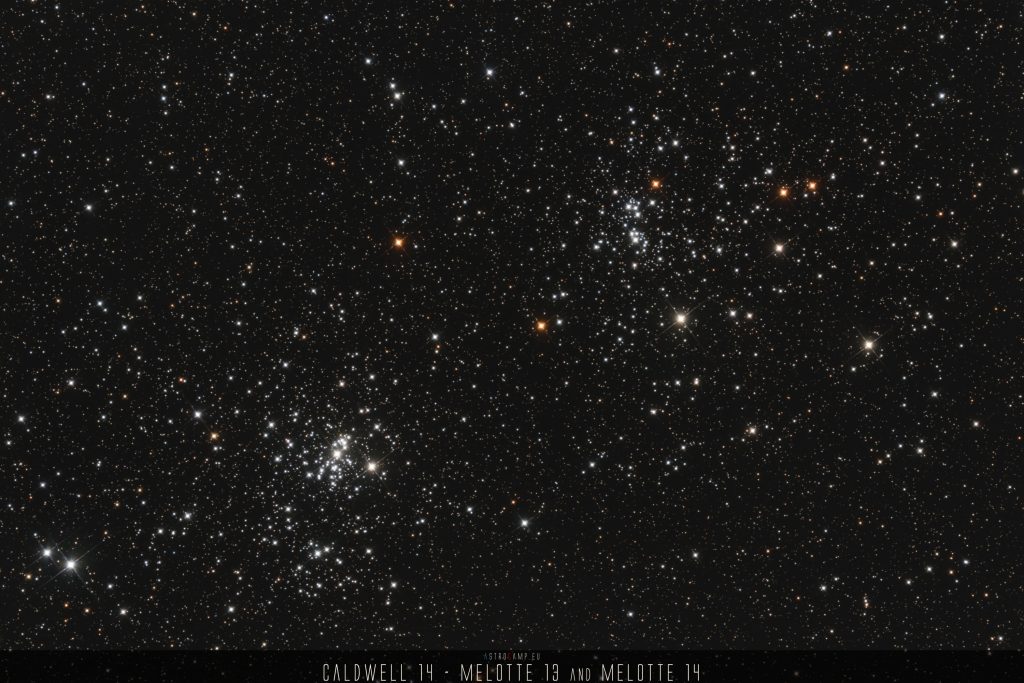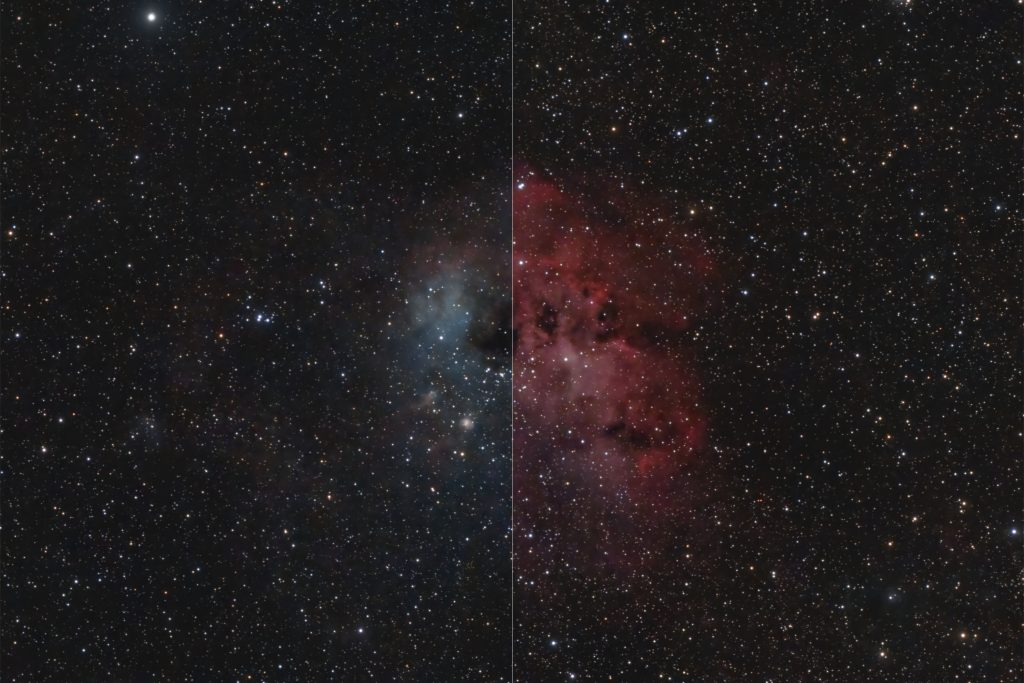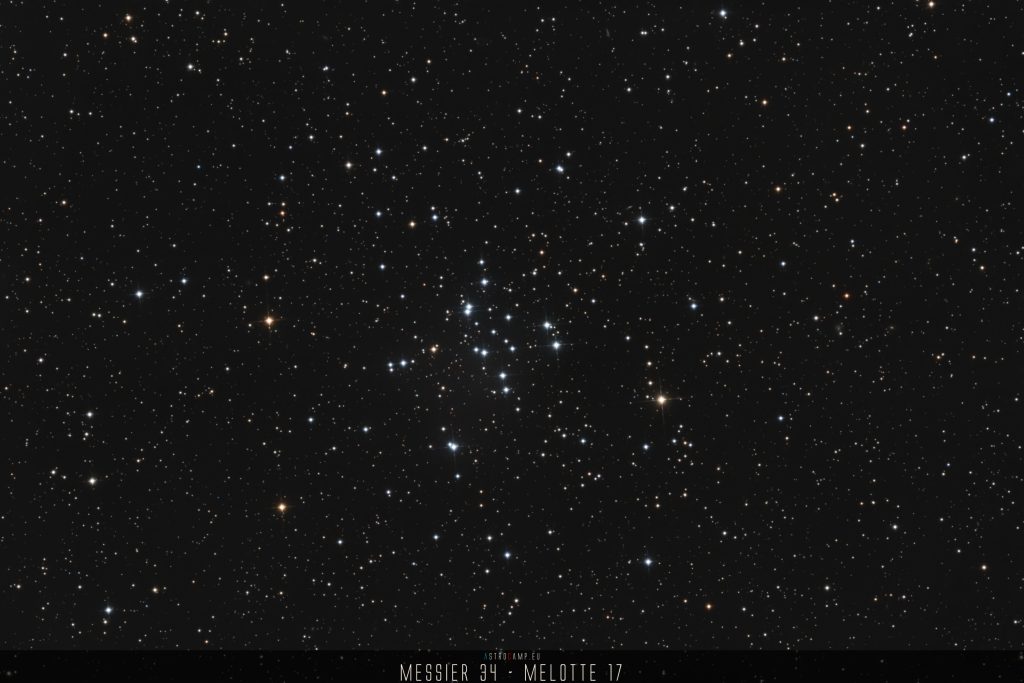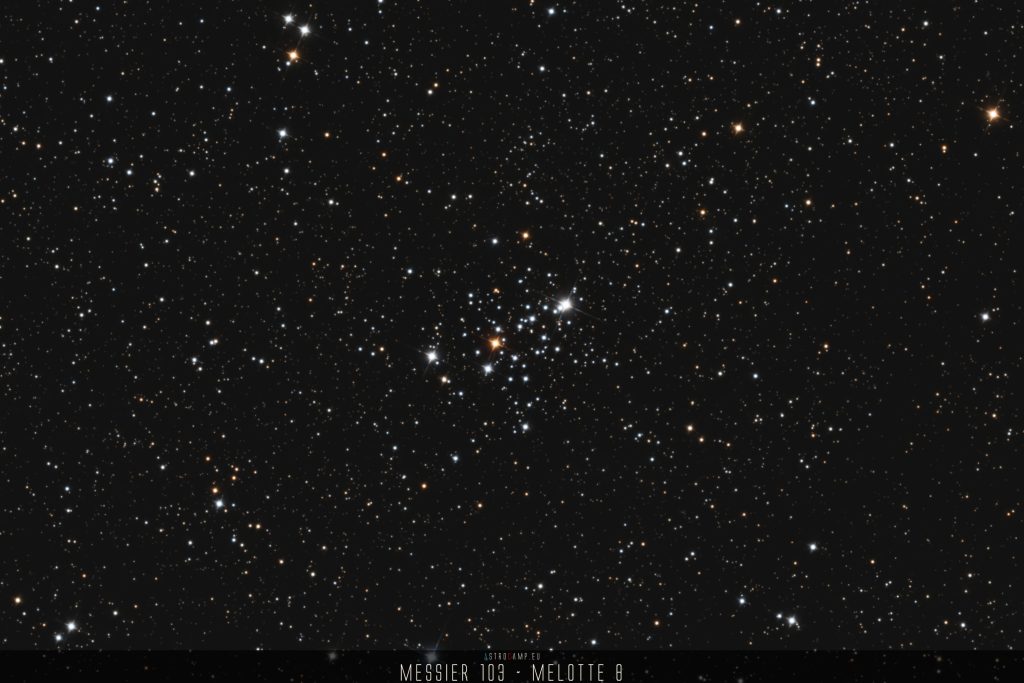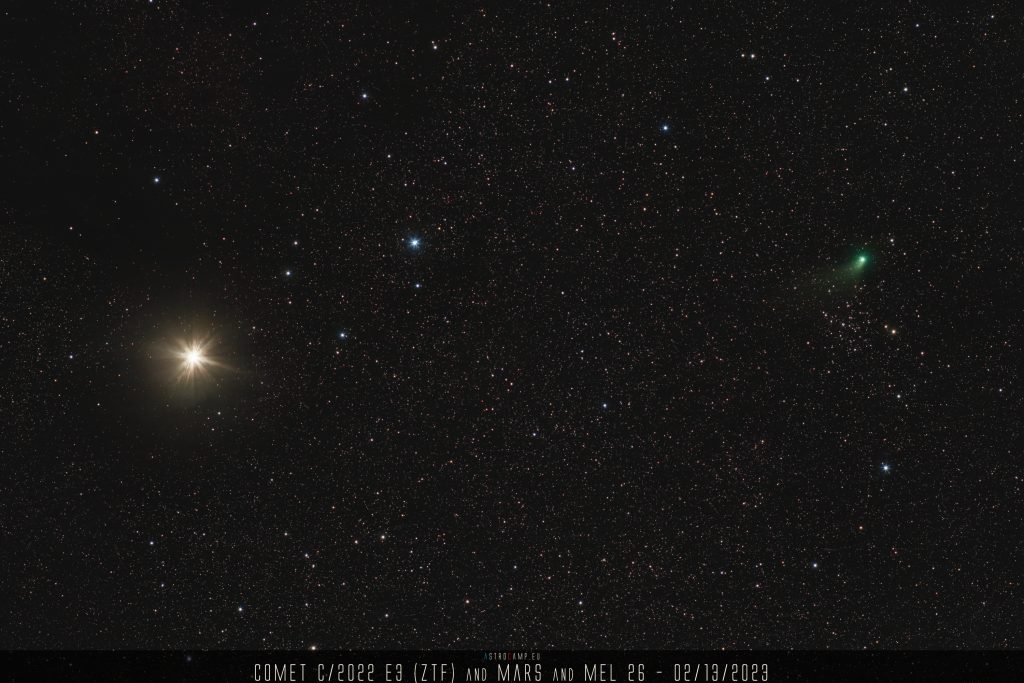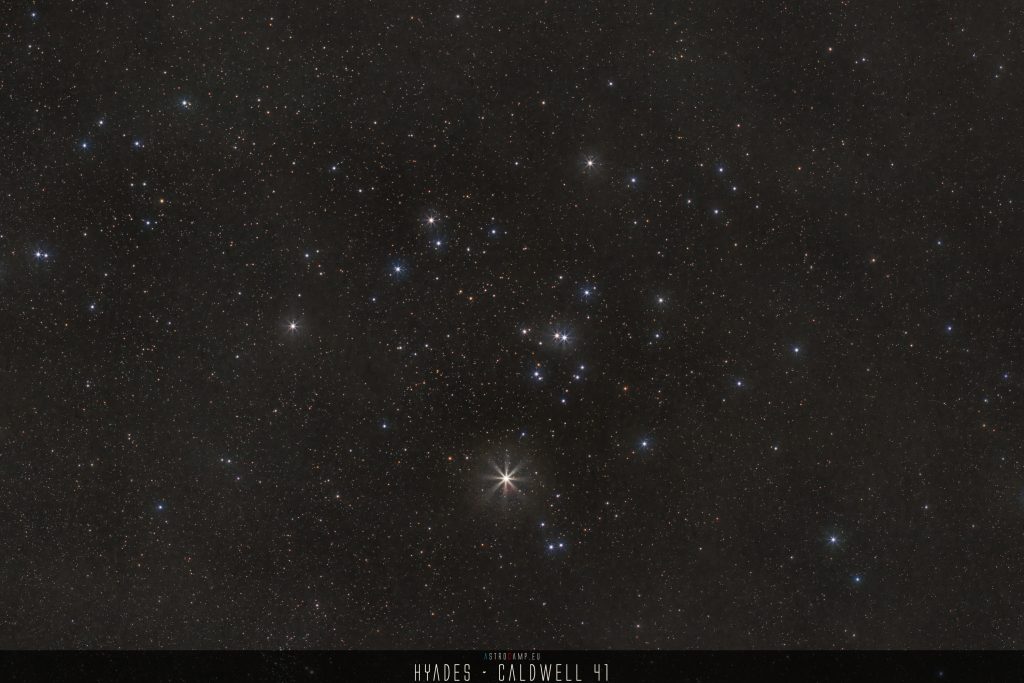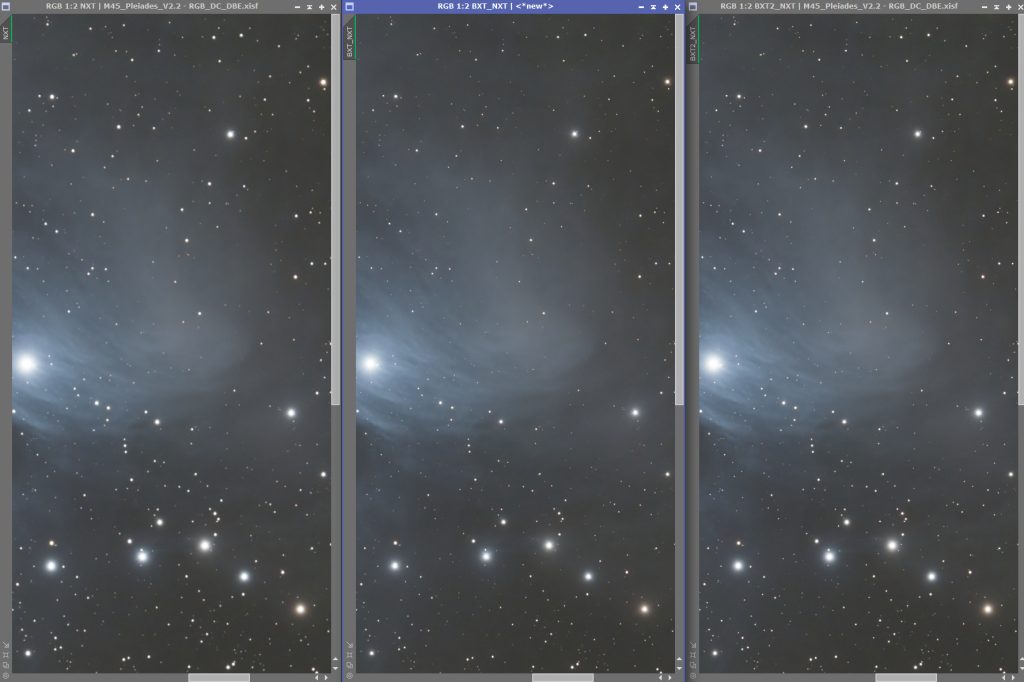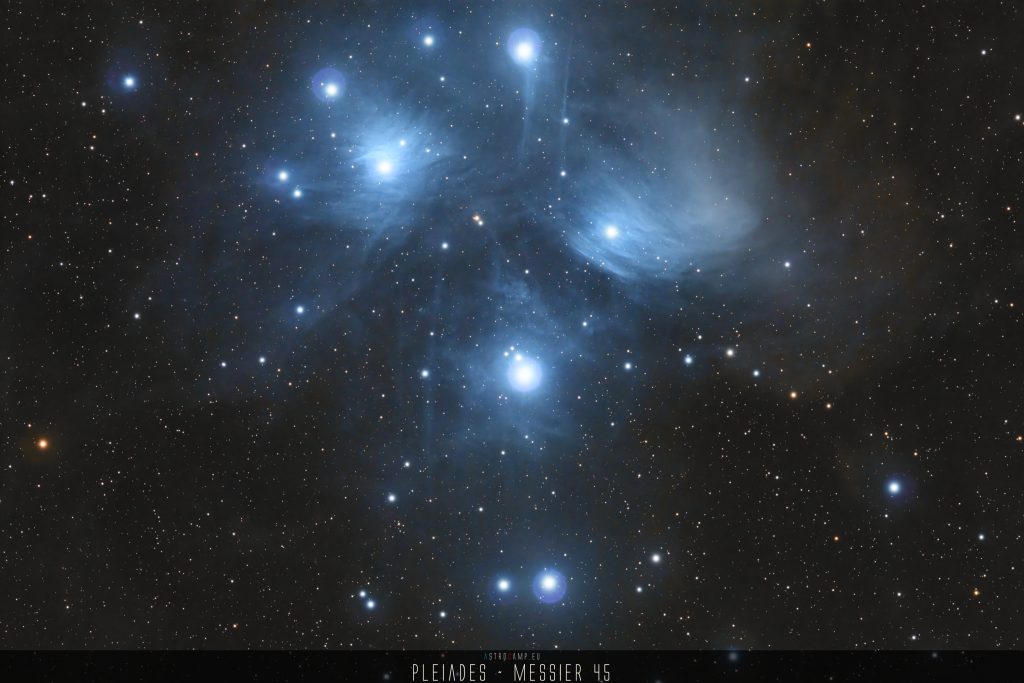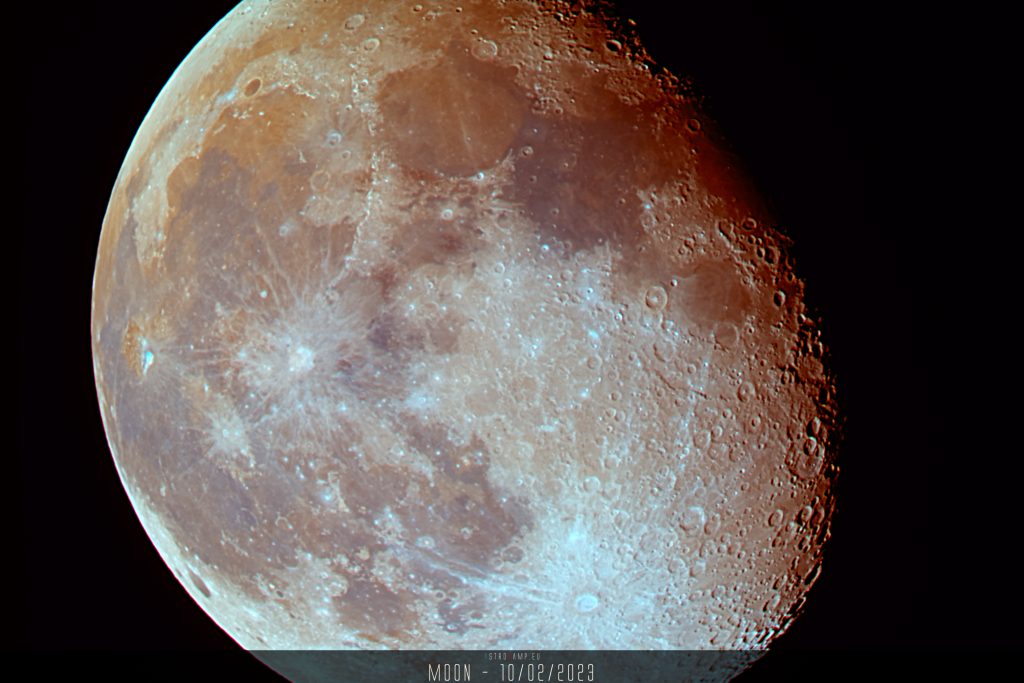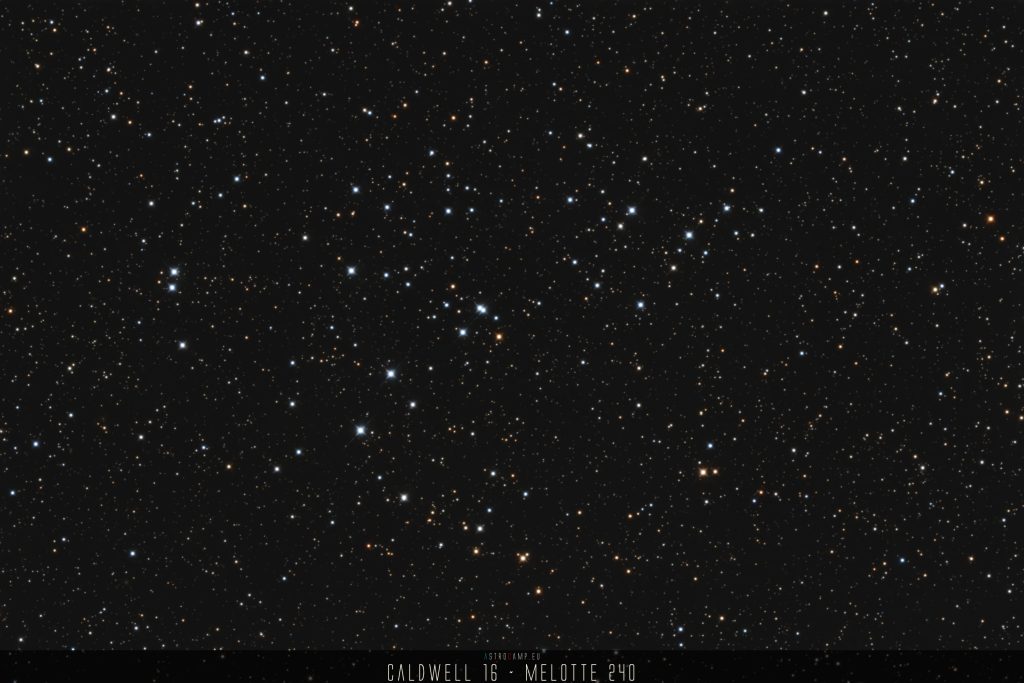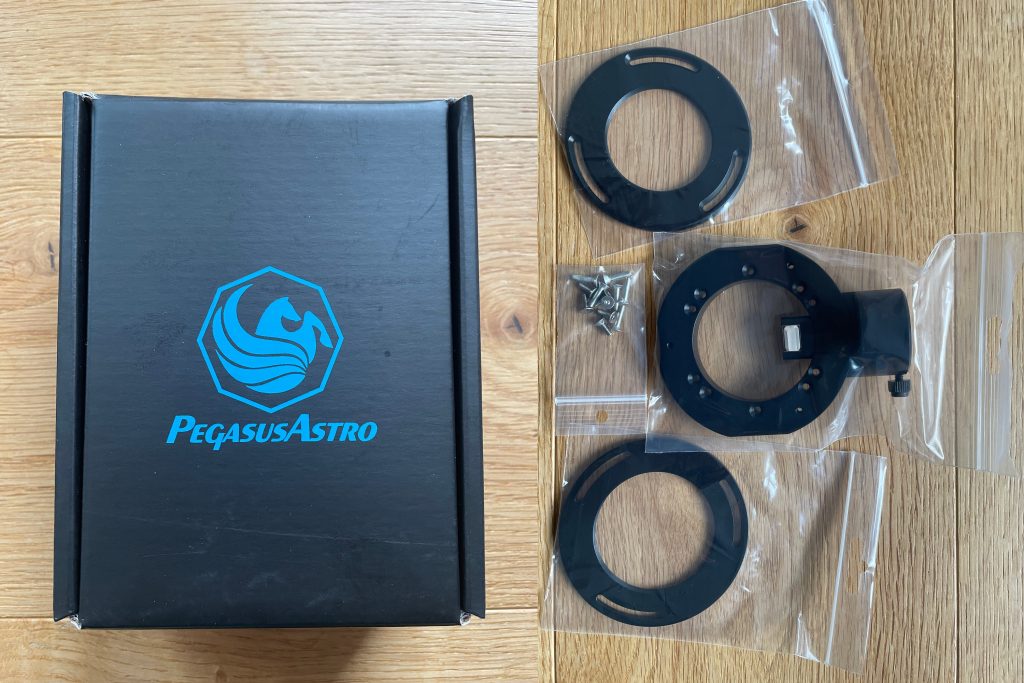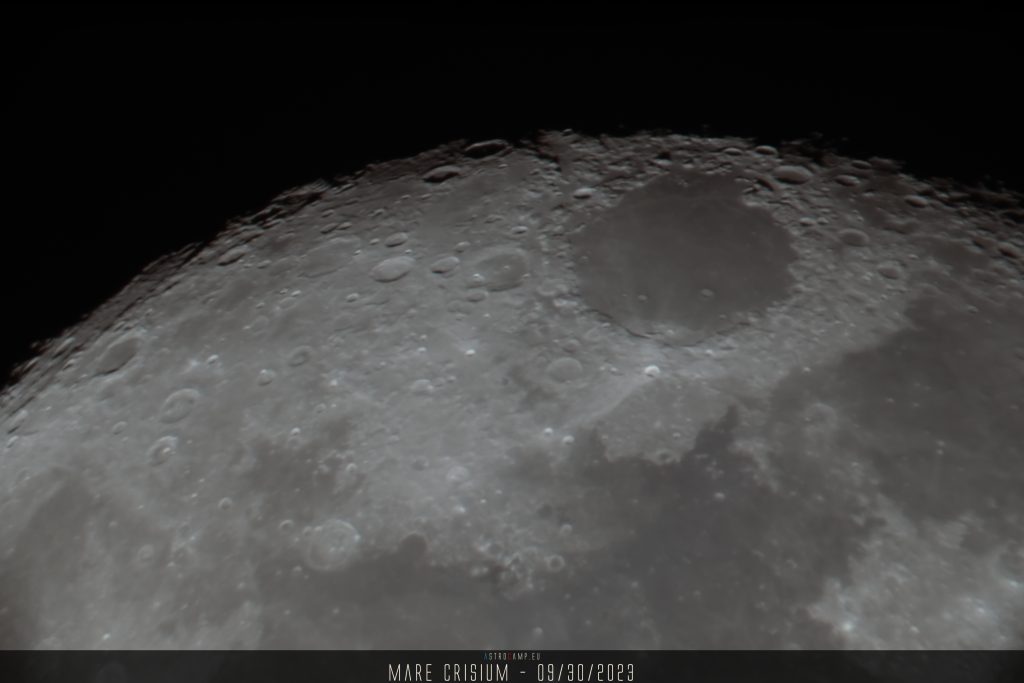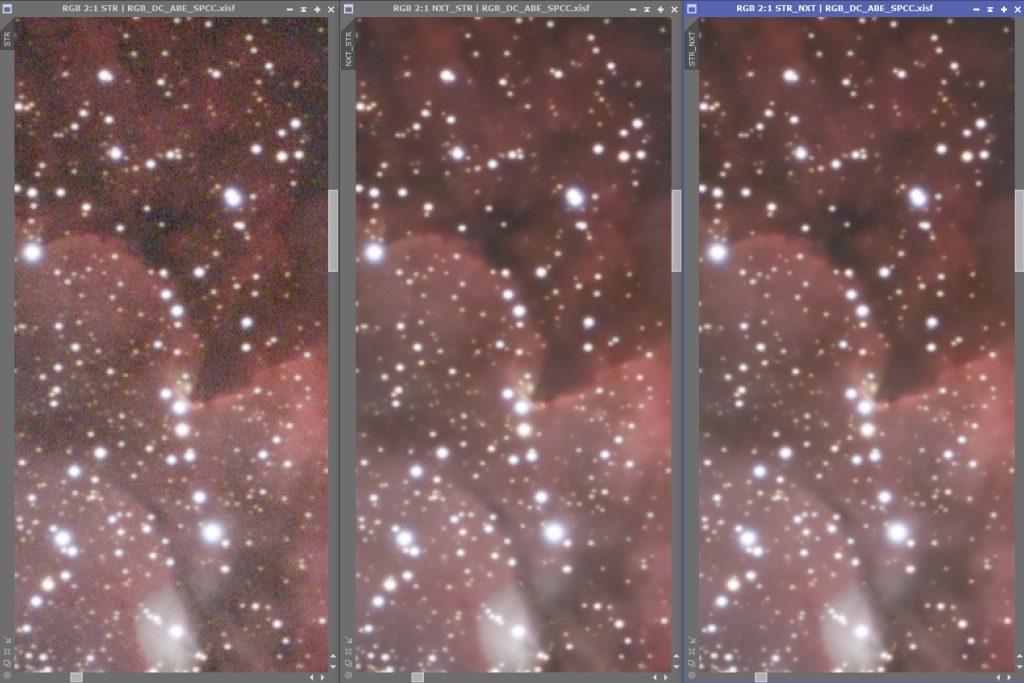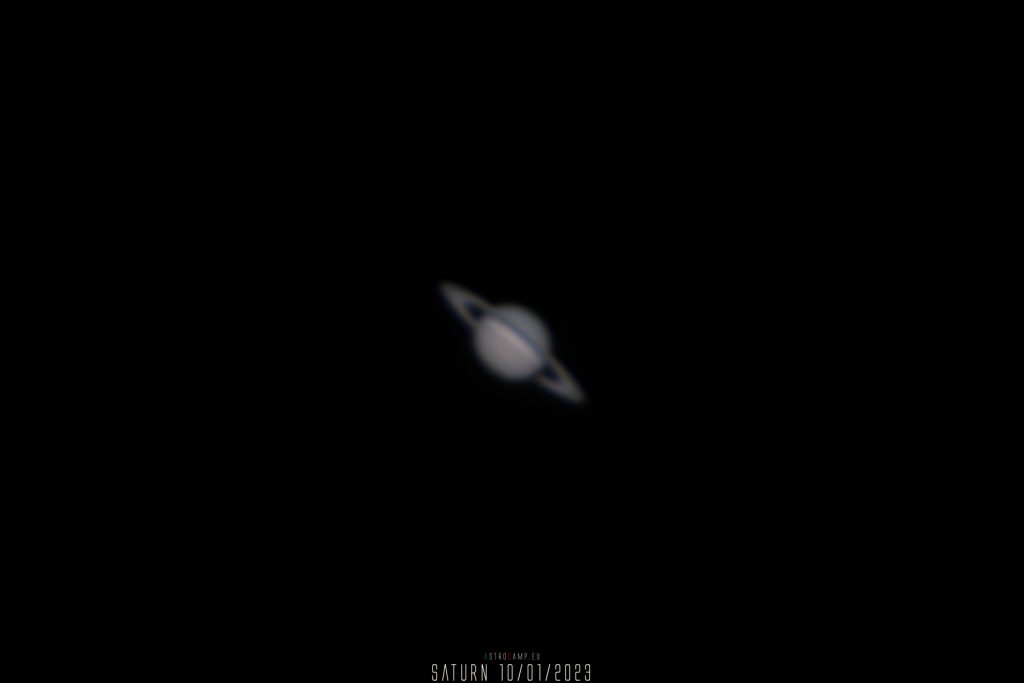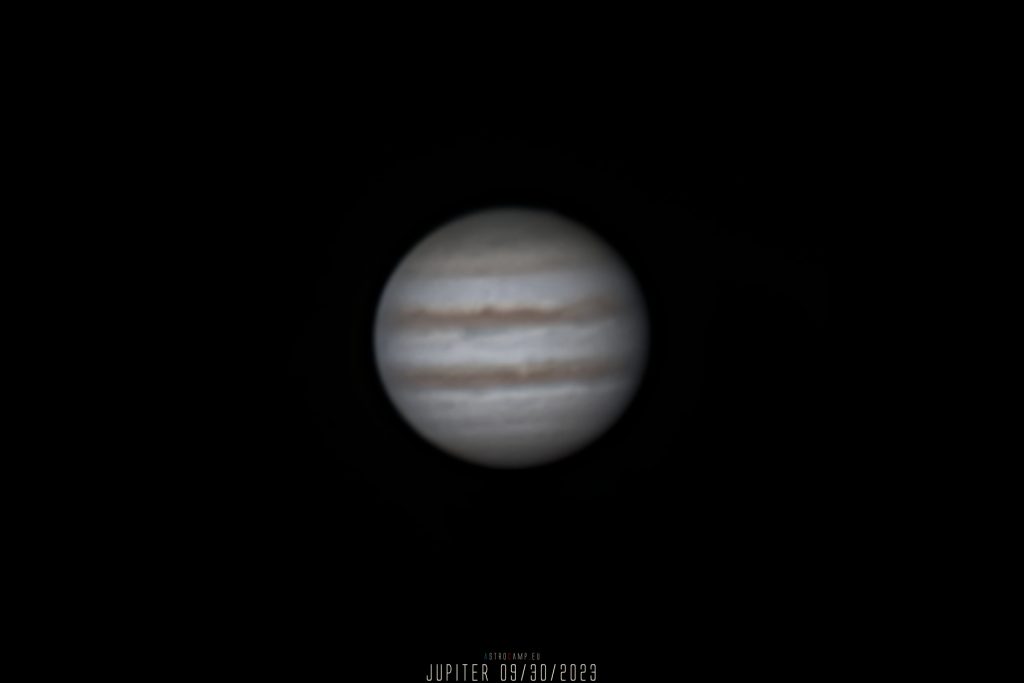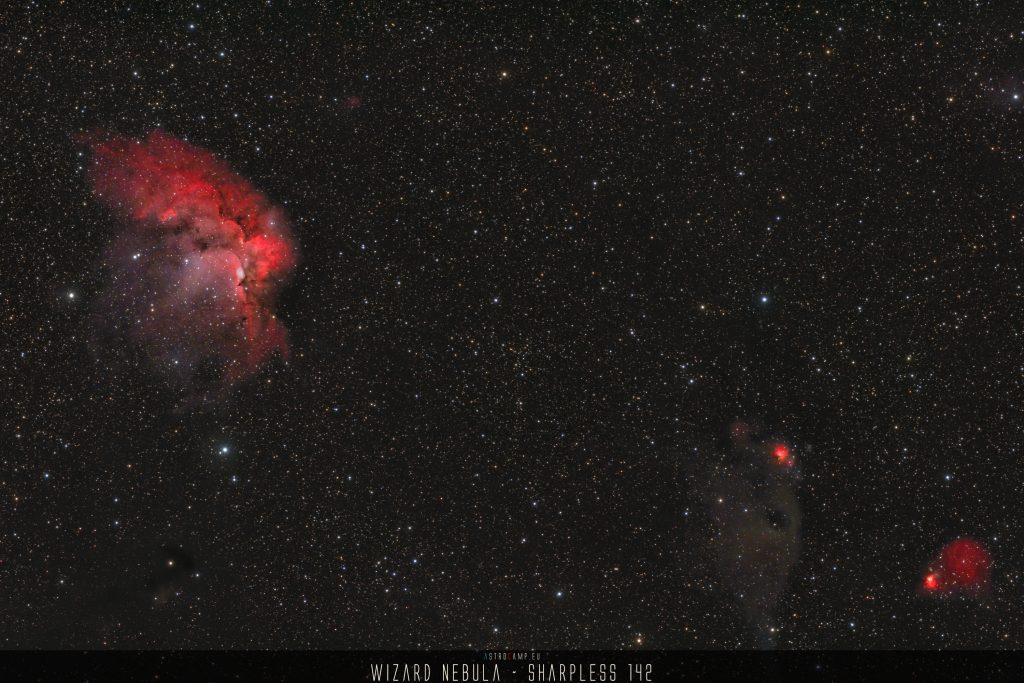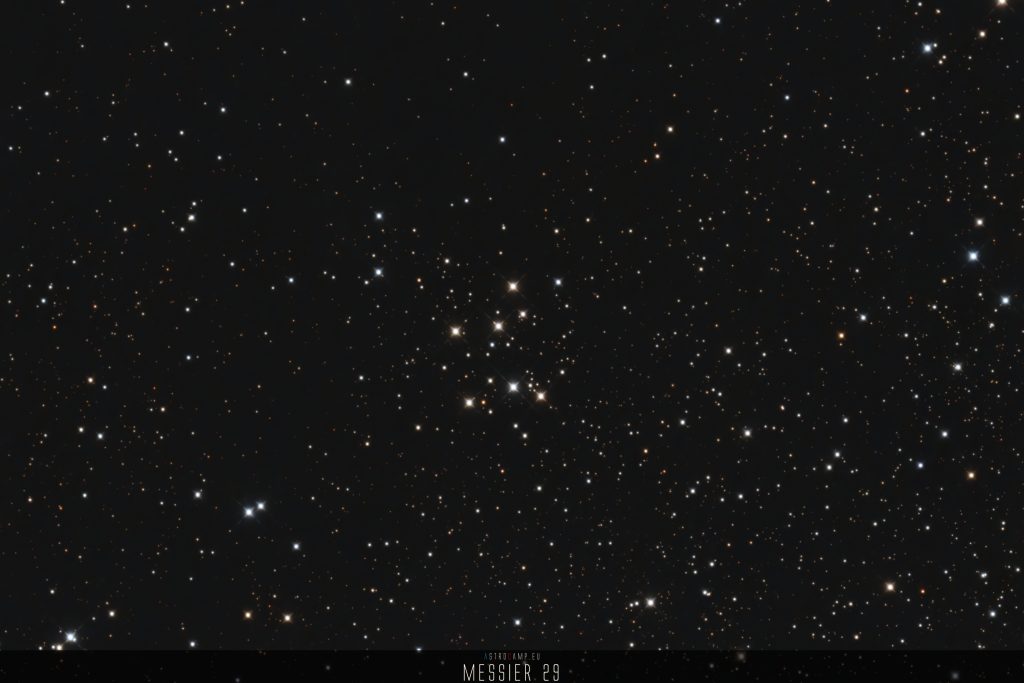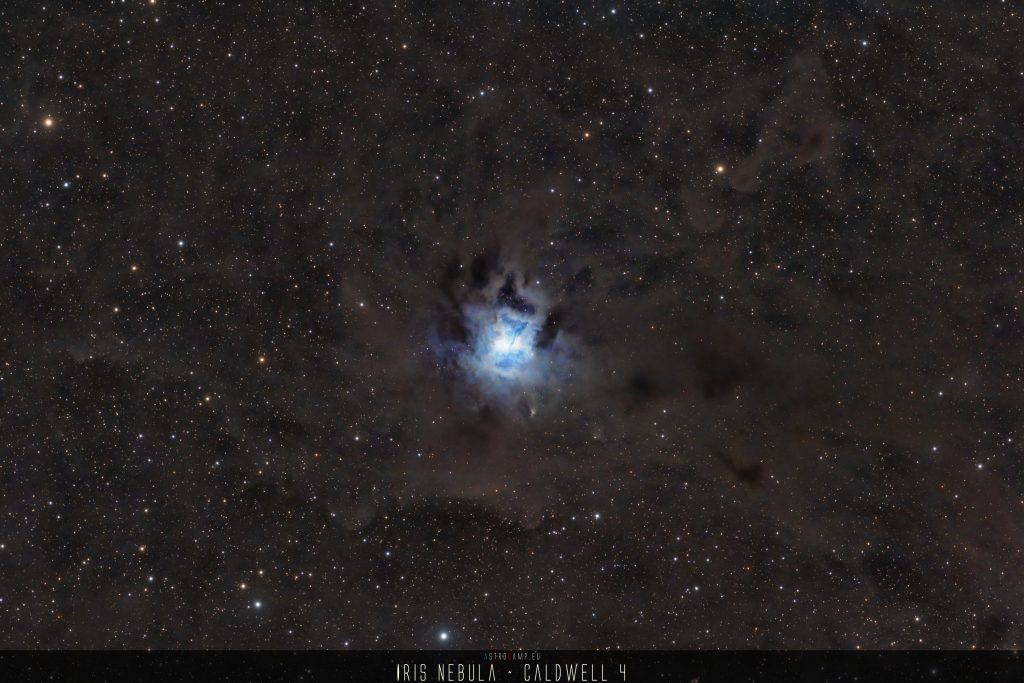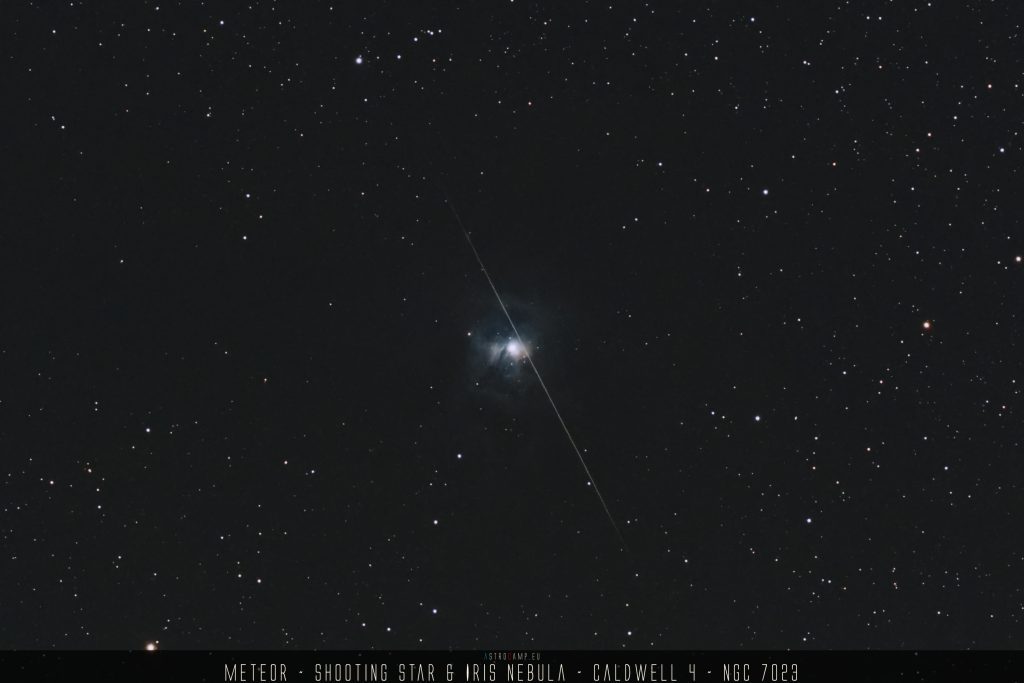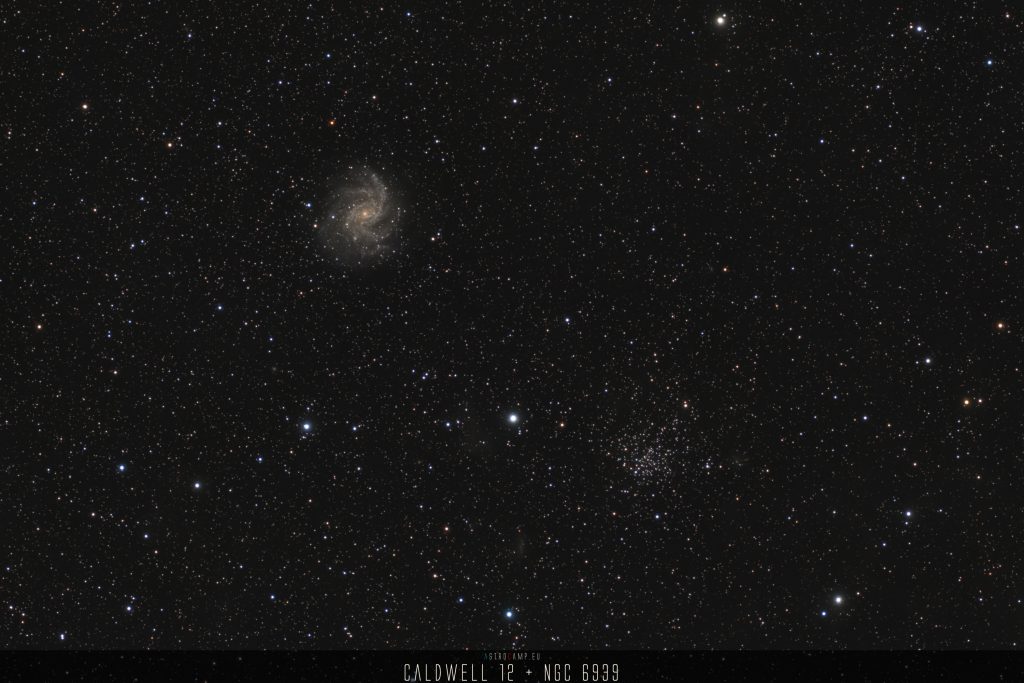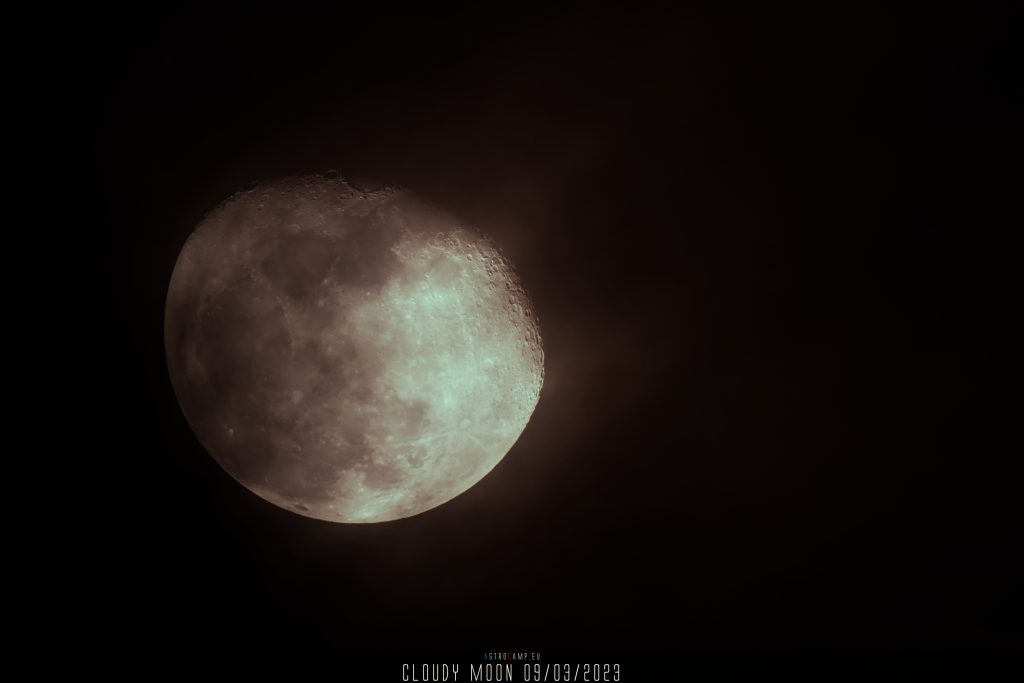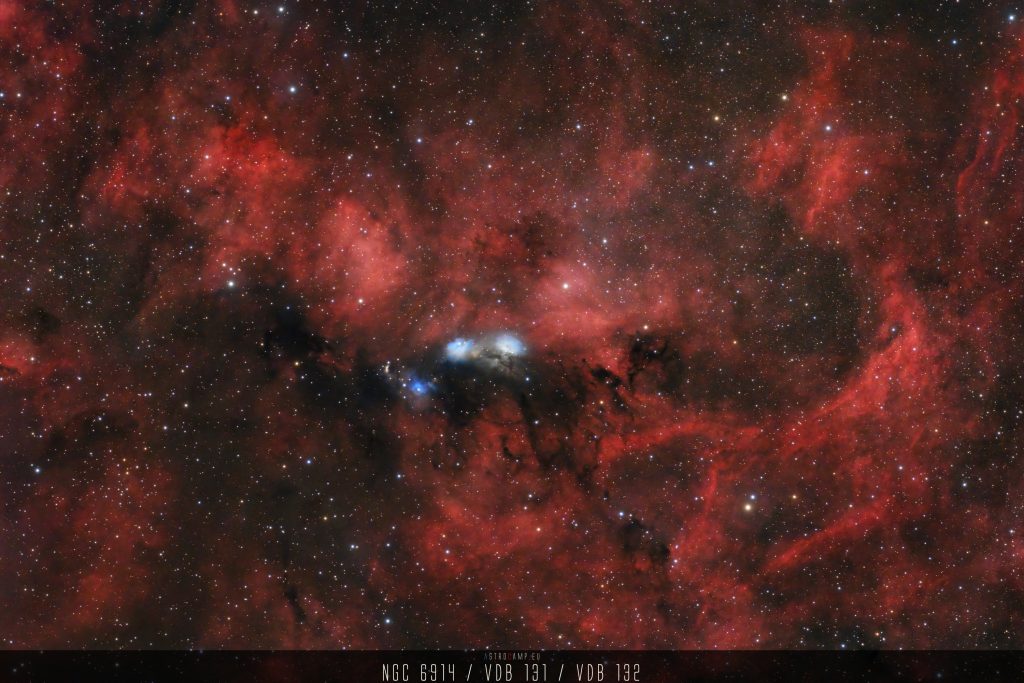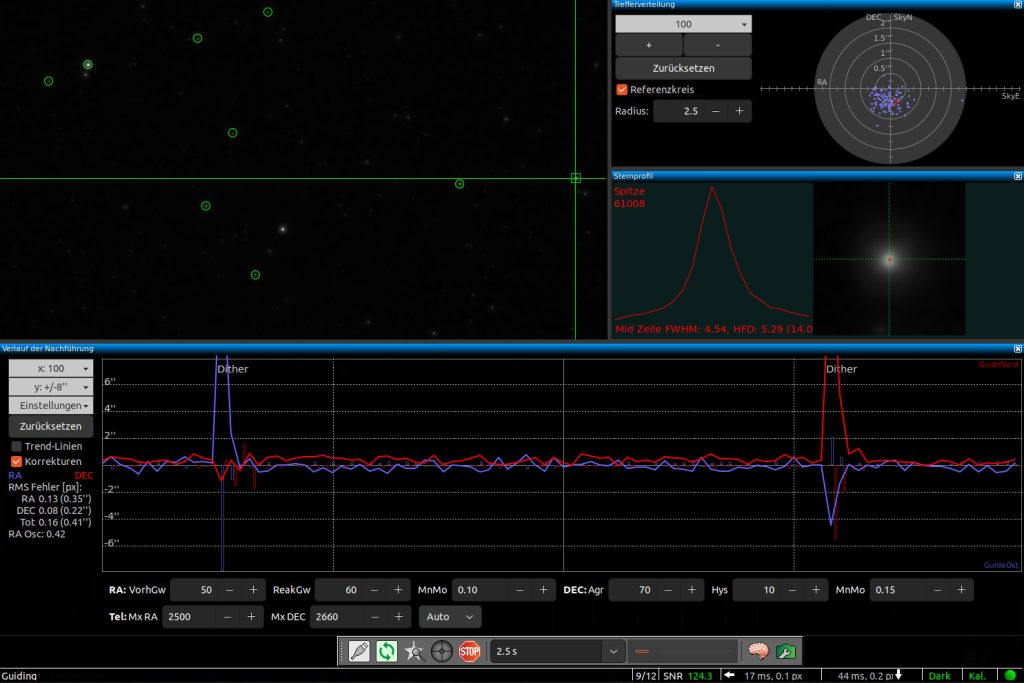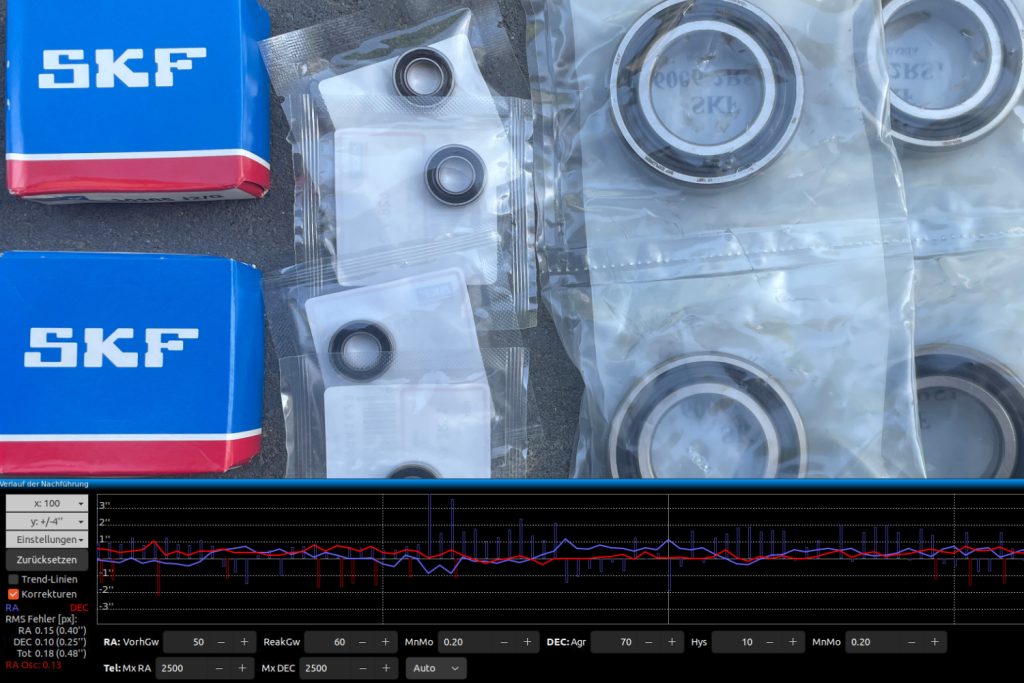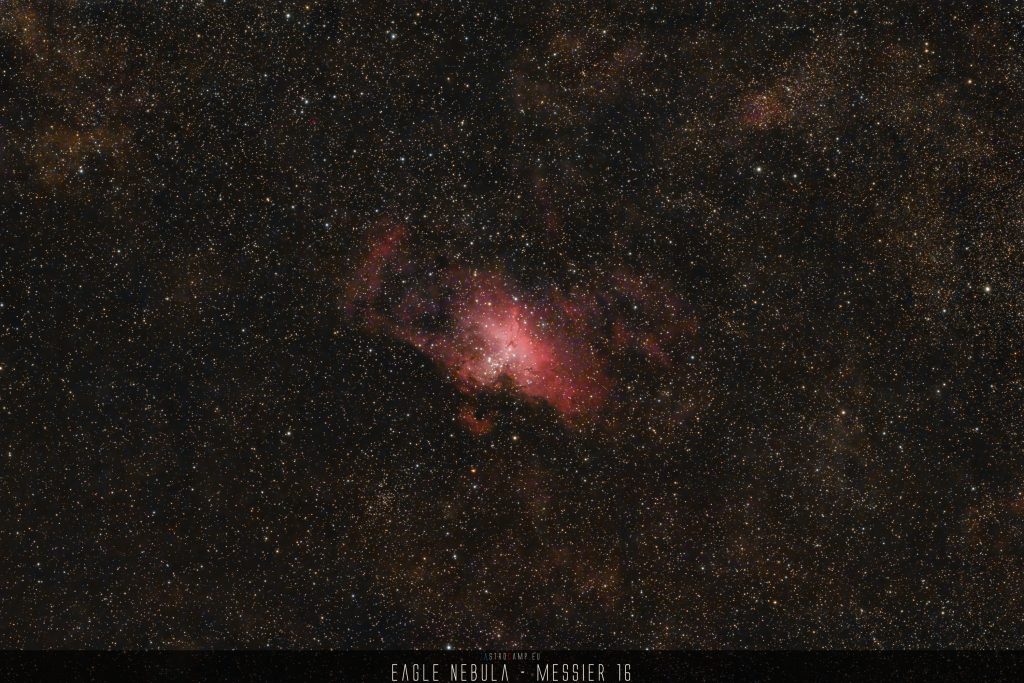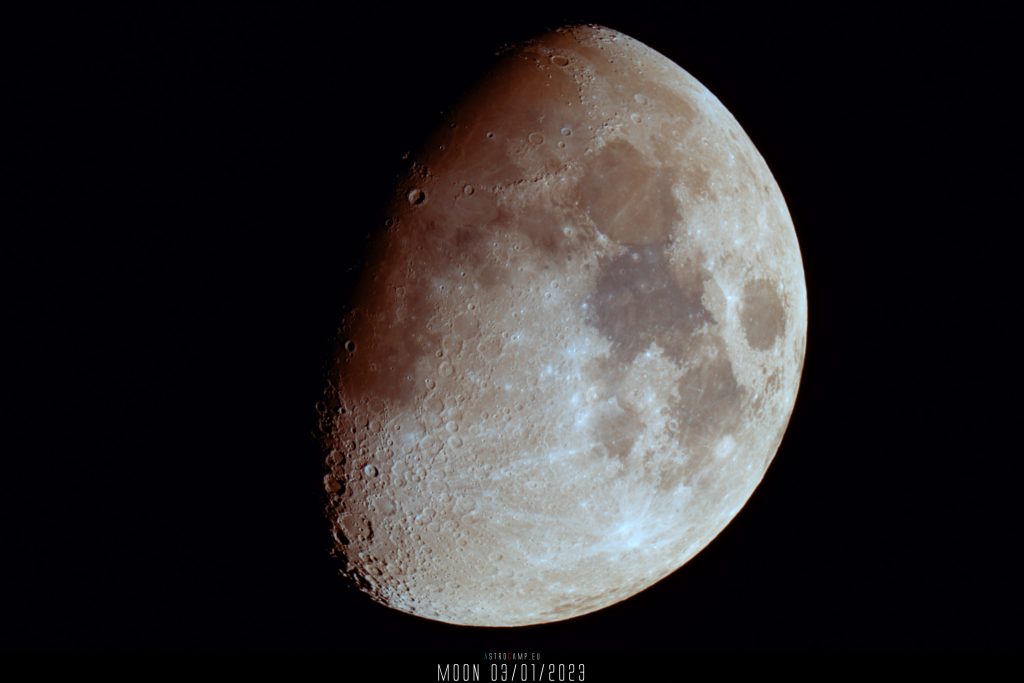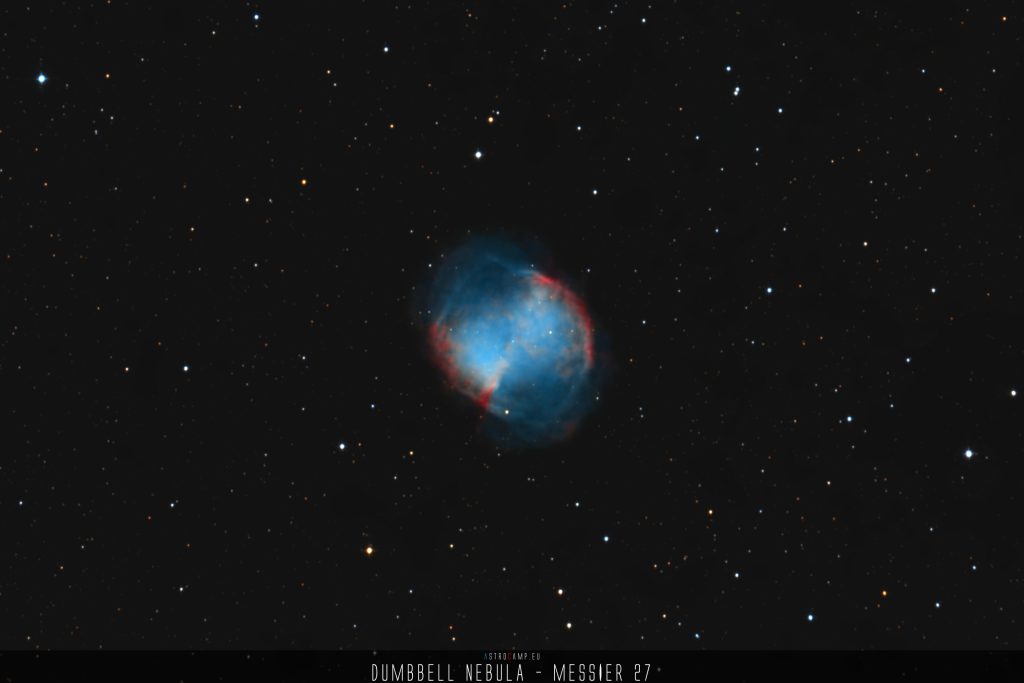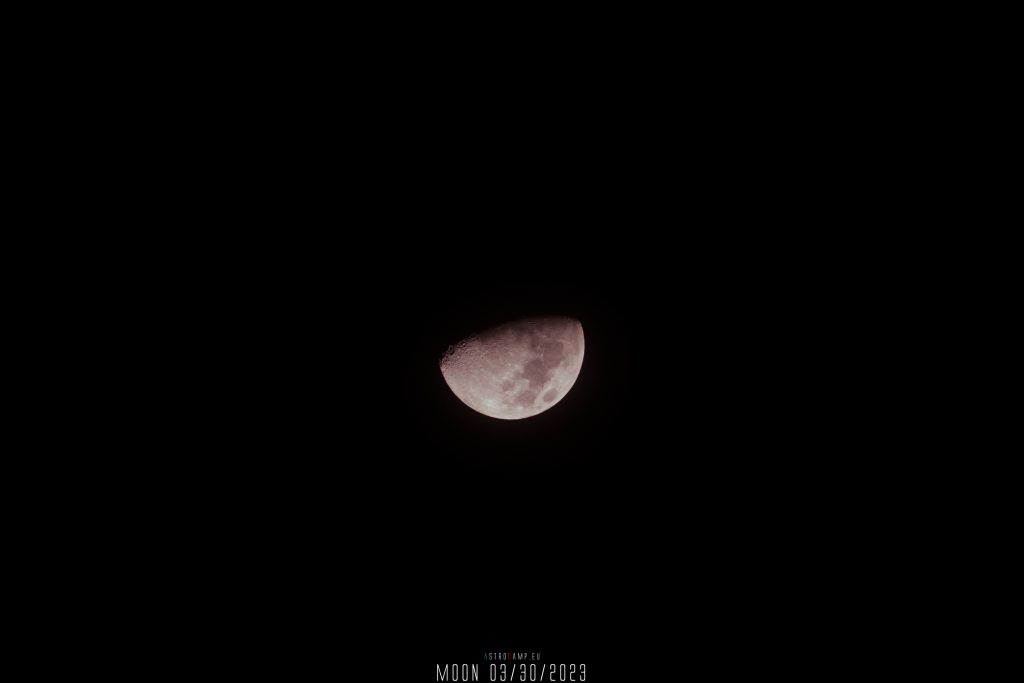Messier 37, located in the constellation Auriga, is a prominent open star cluster approximately 4,511 light-years away. It contains hundreds of stars, including many red giants, and spans about 25 light-years across. The cluster is relatively young, estimated to be around 300 million years old, and its stars are gravitationally bound to each other.
Names or Catalog Numbers
- Messier 37 (M37)
- Melotte 38 (Mel 38)
- NGC 2099
Position and Cosmic Neighborhood
Messier 37 is located in the constellation Auriga, surrounded by celestial neighbors such as Taurus, Perseus, and Gemini. Its position in the northern celestial hemisphere makes it easily visible to observers in both hemispheres.
Special Facts
- M37 is one of the oldest known open clusters, providing valuable insights into stellar evolution.
- Its concentration of red giant stars makes it a fascinating target for studying stellar aging processes.
- The cluster’s relatively compact size and dense core contribute to its striking appearance in telescopic observations.
Specifications
- Brightness: Magnitude 5.6
- Distance: Approximately 4,511 light-years
- Size (Light-years): Approximately 25
- Size (Arcminutes): Approximately 15

